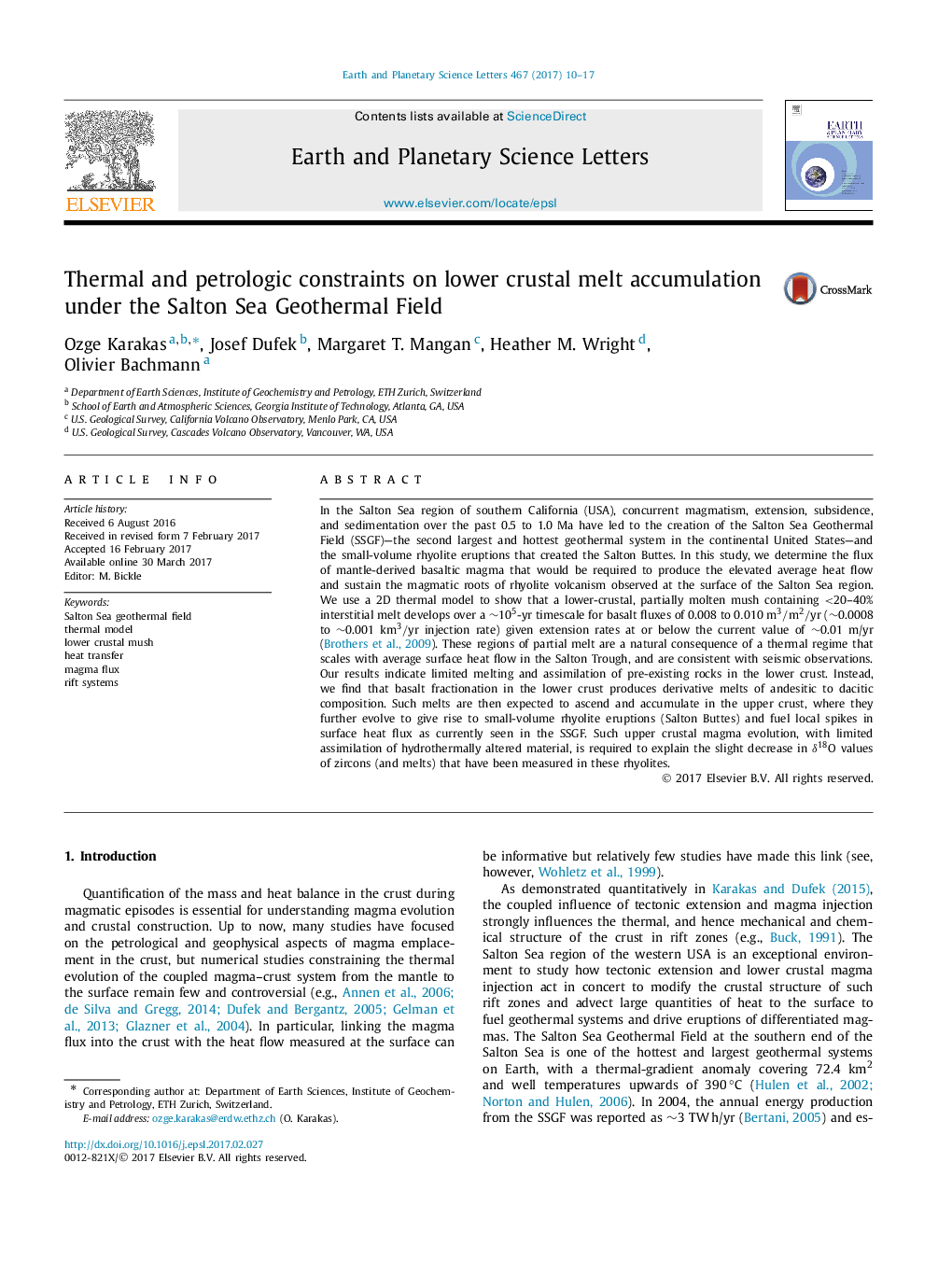| کد مقاله | کد نشریه | سال انتشار | مقاله انگلیسی | نسخه تمام متن |
|---|---|---|---|---|
| 5779934 | 1634689 | 2017 | 8 صفحه PDF | دانلود رایگان |
- Thermal simulations suggest a highly crystalline, 0.5-1 km thick mush in lower crust.
- Melt fraction in the lower crustal mush layer is <0.2-0.4.
- Intermediate magmas are formed by fractionation with minor crustal assimilation (AFC).
- Magma intrusions and rifting can generate the largest silicic geothermal systems.
In the Salton Sea region of southern California (USA), concurrent magmatism, extension, subsidence, and sedimentation over the past 0.5 to 1.0 Ma have led to the creation of the Salton Sea Geothermal Field (SSGF)-the second largest and hottest geothermal system in the continental United States-and the small-volume rhyolite eruptions that created the Salton Buttes. In this study, we determine the flux of mantle-derived basaltic magma that would be required to produce the elevated average heat flow and sustain the magmatic roots of rhyolite volcanism observed at the surface of the Salton Sea region. We use a 2D thermal model to show that a lower-crustal, partially molten mush containing <20-40% interstitial melt develops over a â¼105-yr timescale for basalt fluxes of 0.008 to 0.010m3/m2/yr (â¼0.0008 to â¼0.001 km/3yr injection rate) given extension rates at or below the current value of â¼0.01 m/yr (Brothers et al., 2009). These regions of partial melt are a natural consequence of a thermal regime that scales with average surface heat flow in the Salton Trough, and are consistent with seismic observations. Our results indicate limited melting and assimilation of pre-existing rocks in the lower crust. Instead, we find that basalt fractionation in the lower crust produces derivative melts of andesitic to dacitic composition. Such melts are then expected to ascend and accumulate in the upper crust, where they further evolve to give rise to small-volume rhyolite eruptions (Salton Buttes) and fuel local spikes in surface heat flux as currently seen in the SSGF. Such upper crustal magma evolution, with limited assimilation of hydrothermally altered material, is required to explain the slight decrease in δ18O values of zircons (and melts) that have been measured in these rhyolites.
Journal: Earth and Planetary Science Letters - Volume 467, 1 June 2017, Pages 10-17
